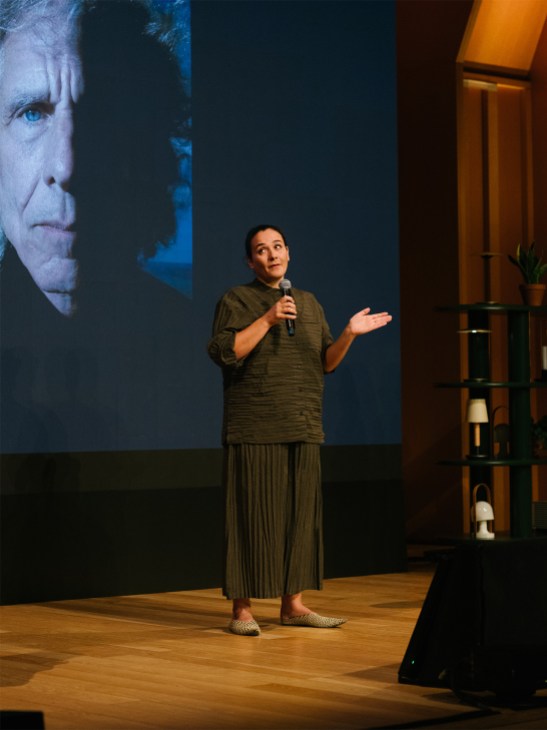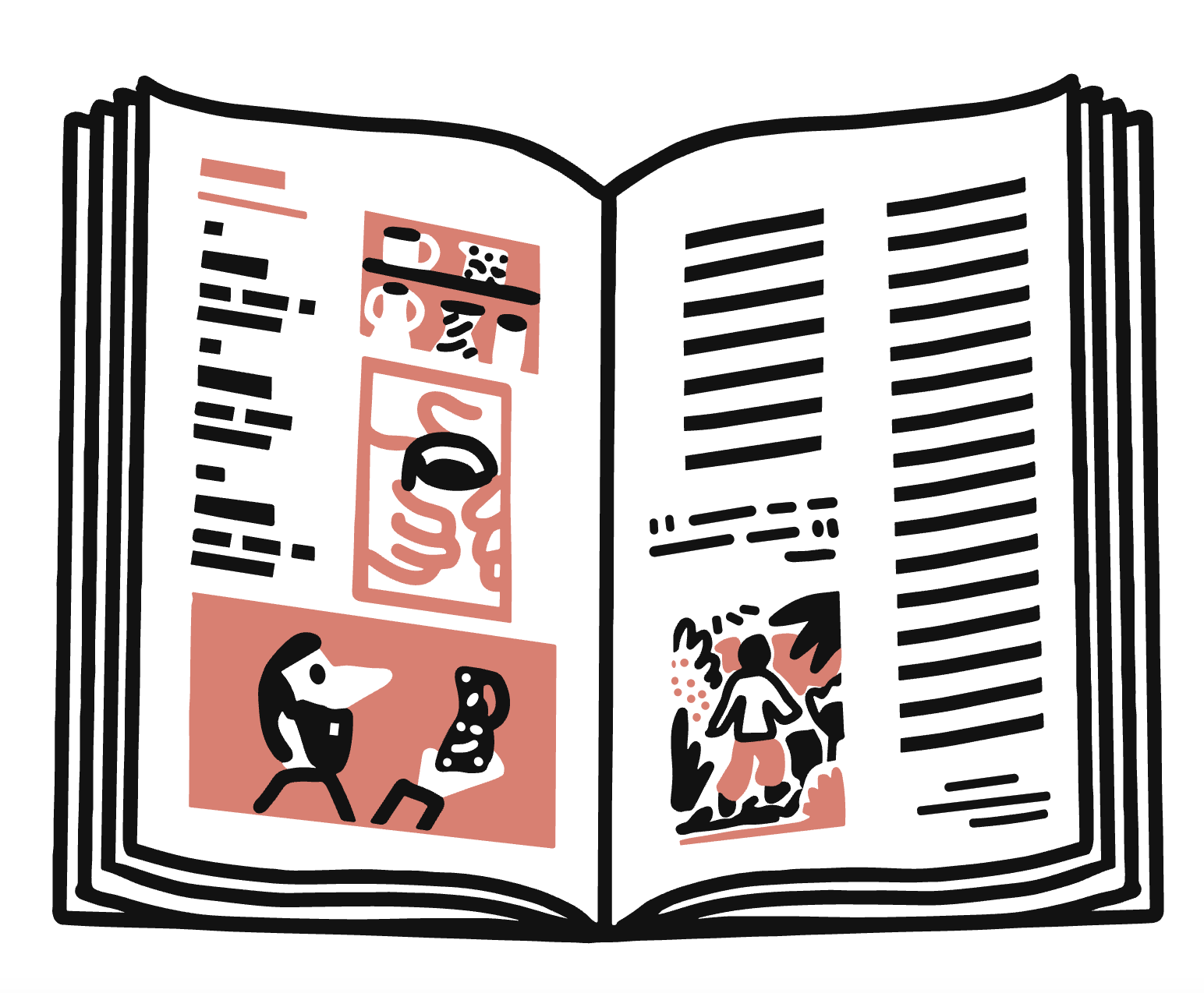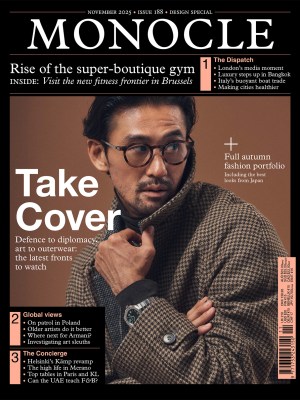Adriana Dominguez on what happens when a heritage fashion brand thinks like a start up
The executive chairwoman of Adolfo Domínguez on how she’s using data, AI and design intuition to future-proof the label without losing its soul.
Adolfo Domínguez, one of Spain’s most cherished heritage fashion labels, is being steered into its next chapter by its third-generation leader, Adriana Domínguez. At Monocle’s Quality of Life conference she was interviewed onstage about the power of Spanish fashion by Natalie Theodosi, Monocle’s fashion director, and Enric Pastor, the editor in chief of Manera magazine.

Enric Pastor: I grew up in the 1980s, when your father launched his new tailored linen line and created the slogan, “Wrinkles are beautiful”. It was a revolutionary success in Japan, breaking new markets and becoming such a major part of the fashion identity of Spain. How do you keep the heritage of the brand alive and thriving, while continuing to reinvent it for new markets and generations?
AD: I am the third generation in control of the brand, following my father and grandfather before him. I didn’t have to read a brand book – it was part of my education. One of the biggest things that a brand can do is to bring someone younger on board and trust them. They will have a different connection to the current landscape and often a completely different lifestyle. In the past eight years of being CEO, I’ve endeavoured to make the company more relevant to today. But, of course, this is a process that never ends.
Natalie Theodosi: In previous conversations, you told me that building a modern business is about striking a balance between heritage and global expansion. To do so, you need to experiment and think outside the box. What is your vision of a modern business?
AD: We have been thinking about how we get to the market. There are physical shops and online options, which have now been going for a long time. They’re necessary, to a degree. But an online presence is no longer innovative. We currently have some 370 spaces in 51 countries; one of the ways in which we are using them experimentally is through renting.
Most fashion brands do not rent out their products. Another thing that we have been trying is to offer a personal stylist, similar to the Stitch Fix model. They do a style test, then, between a human stylist and an algorithm, create the customer a box of selected clothes that they haven’t bought yet. Then the customer pays for whatever they don’t return. We have been seeing good conversion rates there and have been tailoring this to the customer using a blend of personal shoppers and AI. This, for me, is innovation.
EP: Let’s talk about your roots and about Galicia. How important is it for you to be local and what’s the global impact of keeping things close to home?
AD: If we’re talking about linen, in the beginning, there was a producer in the north of Italy called Solbiati. That’s where both Armani and my father would source the material. My father didn’t choose the local option; he didn’t go with Galicia. So what has happened in our generation? Why are we looking closer? What feels modern to me is to draw from real experience in somewhere that you know. That way, there’s no copy-and-paste; it’s homely, it’s specific and it has a flavour. This year, we’re launching part of a collection that’s made with cotton from Spain. We didn’t know cotton was grown in the country but there are farmers near Seville in the south, so we’re using them. We’re also doing a capsule made with wool exclusively from Spain’s migratory sheep. In doing so, we’re supporting local economies and lifestyles that would otherwise go extinct.
NT: It’s a formula that’s working – you’re seeing growth. Can you give us a few clues about your vision for the future of the brand, post-turnaround?
AD: What’s important for creative brands first and foremost is a sustainable business model. Working on that, I believe, is the best thing that I can do to secure the vision that we already have. Fashion is “new, new, new” every six months – products, shows, communications. I’m working on heritage pieces, slowing things down, so that we can have the same product in the shop season after season. People don’t say, “Oh, boring.” It’s quite the opposite. They see heritage and legacy. That’s what’s valuable to a brand.
Monocle comment:
An online presence is nothing new. Innovation sometimes lies in how you use your assets in the real world, know the market and engage with your customers. Care is key to keeping a brand fresh in its third generation and beyond.


